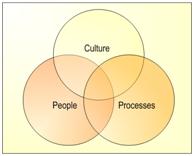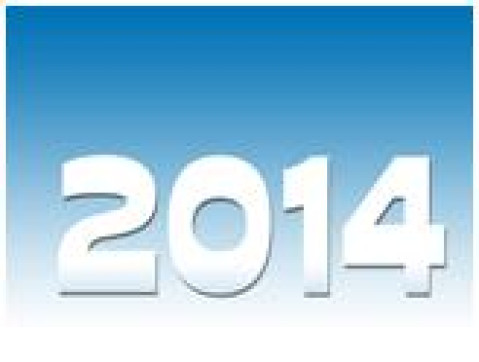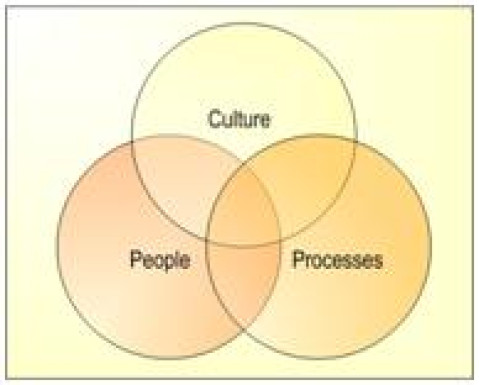Widgetized Section
Go to Admin » Appearance » Widgets » and move Gabfire Widget: Social into that MastheadOverlay zone
Plus ça change, the more it isn’t change
By Laree Kiely
 This column is the last for 2013. Or is it the preview of 2014? Typically, we would do a retrospective on the last year, comment about how fast it went, bemoan rapid changes, and propose a toast to get us to January 2 to begin it all again. “Fast away the old year passes, hail the new, ye lads and lasses,” as the old holiday song says. So let us skip the rear-view, hail the new view and make this coming year a great one. The past year cannot be altered, but the next one can. So here is a call to action. Let’s make 2014 the year of solutions. Let us show up and step up. Everyone. Less surviving, more thriving.
This column is the last for 2013. Or is it the preview of 2014? Typically, we would do a retrospective on the last year, comment about how fast it went, bemoan rapid changes, and propose a toast to get us to January 2 to begin it all again. “Fast away the old year passes, hail the new, ye lads and lasses,” as the old holiday song says. So let us skip the rear-view, hail the new view and make this coming year a great one. The past year cannot be altered, but the next one can. So here is a call to action. Let’s make 2014 the year of solutions. Let us show up and step up. Everyone. Less surviving, more thriving.
In my line of work (helping organizations in all sectors with transformation and change), I get a big picture view across many industries and I make a point of observing the overall patterns. As a result, I am often asked what I’m seeing out there. One important pattern: 2014 will be not so much the year of “change”; instead, it will be the year of accepting that change is just how it is. Barring some catastrophe, in 2014 we will continue to live in “exponential times” (for a great view on this, see “Shift Happens 2013” on YouTube).
On the other hand, many organizations believe they are the only place where there is turmoil. Banks think they are the only industry in flux, while auto workers think they have the biggest challenges. Health care workers think theirs is the biggest transformation yet government workers believe they are under the most fire and peril. Nonprofits think they are having the most trouble staying alive and education thinks it has the most work to do. In looking at them all, we get some clarity on the year ahead. We find that some well-known concepts and old frames of reference have become obsolete and should be dropped… no, a better word might be “jettisoned.” The new year will require questioning, sometimes discarding, some old assumptions and approaches and maybe “tipping” a sacred cow or two.
I. First big picture pattern: “change” needs to change.
If it happens all the time, it ain’t “change.” What we call things matters. The labels we use are not just reactive. They create a mindset and limit and focus our choices. For example, the word “change” is bad, very bad. Take that well-intentioned and earnest oxymoron, “constant change.” If change is every day, all day long, never stops, inescapable, ubiquitous, etc. it cannot be called “change.” The answer to this problem may require some new nomenclature but also something else. It is time to move to new solutions, something to get individuals and organizations out of the loop of calling for help and starting from scratch every time there is a new “change.” Why would the cumbersome process of change management take place repeatedly or a new “leading through change” module be undertaken with every new development? Why? This big picture pattern is clear because our old model of change management is not working. If it were, we would respond more nimbly and handily to the new, the fast, the unstable, the emergent challenges that come around relentlessly and regularly. If it were working, we would get in front of the changes.
II. Second big picture pattern: the word “Management” in Change Management.
 Notice how the notion of “managing change” implies something is happening to us and we need to react. Here comes a change, we had better start managing it. However, that actually implies being behind change. Another factor in this pattern is that people can become the victims of change and then they too would obviously require managing.
Notice how the notion of “managing change” implies something is happening to us and we need to react. Here comes a change, we had better start managing it. However, that actually implies being behind change. Another factor in this pattern is that people can become the victims of change and then they too would obviously require managing.
Some change management programs actually treat people like victims of change. They develop messaging strategies or use persuasion, bullying, babying, cajoling, and all of the other possible solutions for how to get “buy-in.” These programs practice a lot of “theying.” They need to buy-in, they will resist, they are the problem. The “they” club is not one you want to be included in because that club’s major function is to get blamed for the effects of change and to be portrayed as resisting the solutions. We take the opposite view. “They,” meaning the people doing the work, are actually the resource where communities or organizations have a serious chance of getting a grip on “change.”
III. Third big picture pattern is a myth: “People resist change.”
This is an old tale that drives much of the change management scene. It is the old saw that people are naturally resistant to change, and of course, need to be managed because of it. Not only is there a mass of counter evidence but it is a very disrespectful view of people. People are incredibly adaptable—we are, after all, still here. Be sure to check out the first chapter of Bill Bryson’s book, A Short History of Nearly Everything, for examples of human survival based on people dealing with change and crisis.
The literature that makes people out to be resistant to change misses the obvious. The human race is still around because we adapt and innovate when needed. In social science research, you get answers to the particular questions you ask. Our reading of the literature says that if you ask an open-ended, unbiased question, people don’t hate or resist change; they hate being changed (managed) by some arbitrary, authoritarian intervention. In 2014, let’s investigate the following question. If individuals were in possession of the knowledge, attitudes and behaviors they need to deal with the emergent issues coming at them, could they get ahead of “change” and be ready for anything? Answer: Yes, they could.
And here are a few additional patterns we found:
IV. Time is short.
 The zero sum game mentality has actually caused a zero sum game. If we believe the things we value are scarce, they will become scarce and that belief forces us to compete with each other rather than collaborate. There is plenty of food, money, power, influence, love, safety, joy, to go around. The only commodity that is scarce is time. Yet we treat time as if it is plentiful and everything else as if it is scarce. Here is a pattern worth noting: we can get more of just about anything, but we cannot get another hour in the day. In 2014, let’s use our time more wisely and find common ground.
The zero sum game mentality has actually caused a zero sum game. If we believe the things we value are scarce, they will become scarce and that belief forces us to compete with each other rather than collaborate. There is plenty of food, money, power, influence, love, safety, joy, to go around. The only commodity that is scarce is time. Yet we treat time as if it is plentiful and everything else as if it is scarce. Here is a pattern worth noting: we can get more of just about anything, but we cannot get another hour in the day. In 2014, let’s use our time more wisely and find common ground.
V. Decisions are long.
One of the biggest changes we have to make is getting out of the short-term worldview. I can show you the chapter in the old MBA Finance textbook that created this problem. It’s the chapter on share-holder value. It spread into all sectors and now we make decisions on what is necessary right now without looking at the long-term effects. In 2014, our decisions will require that we learn to see what might happen in the long term given certain short-term steps now.
VI. Velocity will only increase.
The words of Daniel Burris ring more true today than they did in 1993 when he released Technotrends: How to Use Technology to Go Beyond Your Competition. The rules have changed. Change itself has changed. If it works, it is obsolete. Past success is your worst enemy. Learn to fail fast. In 2014, make rapid change your best friend.
VII. Adaptation must be built-in.
Learning how to be nimble is a significant challenge and a survival skill. 21st century tools are needed to ensure our ability to adapt, optimally and thoughtfully. For the new year, it’s being ready in the front end and resilient in the back end, with change sandwiched in-between.
So for 2014, let’s change “change.” Let’s accept where we are and take charge, fearlessly, in the front end. Let’s ensure that what we alter is actually progress. Let us add some new beliefs, attitudes and tools so we are optimally ready. Be in front of it, not fearfully behind, ready for whatever might happen.
Because it will.
Laree Kiely, Ph.D., is the president of the Kiely Group. Dr. Kiely served on the faculty at USC for over 15 years. In addition to currently leading the Kiely Group, she serves as faculty for leadership programs at Duke CE, UCLA, USC, Thunderbird and Ivey (Toronto). The Kiely Group specializes in Leadership and Organizational Impact. She can be reached at [email protected].







Follow Us!